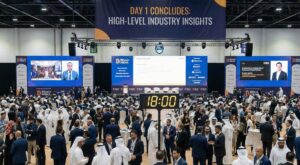A recent IMF study on 19 central banks in the Middle East and Central Asia region showed that Central bank digital currencies (CBDCs) may not be necessary to achieve intended policy goals.
IMF’s Survey on Middle Eastern CBDCs
The survey showed that while CBDCs could help with financial inclusion and reduce the cost of financial services, their adoption requires careful consideration. It noted that addressing underlying constraints and improving existing digital payment systems might be a more practical approach than implementing CBDCs.
The IMF also highlighted a potential downside. According to the IMF, since approximately 83% of funding for banks in the region comes from deposits, CBDCs could compete with these deposits. This can impact bank profits, lending, and overall financial stability.
The survey found that the 19 central banks in the region are exploring CBDCs. These countries are mainly focusing on how they could improve financial inclusion and payment system efficiency. However, the findings indicated that CBDCs’ benefits might be marginal without addressing barriers such as low digital and financial literacy, lack of identification, distrust of financial institutions, and low wealth.
Risks of CBDC
Deposits make up a large share of bank funding in the region. A CBDC could compete with bank deposits, affecting bank profits and lending and, later, financial stability. Nonetheless, banks in the region typically have adequate capital levels, profit margins, and liquidity buffers. Their high concentration, especially among large banks in Gulf Cooperation Council countries, may limit strains on deposits.
For monetary policy, CBDCs could enhance the pass-through into deposit rates by increasing competition among banks. They could also strengthen the bank lending channel of monetary policy. However, the impact is likely to be country-specific and challenging to estimate due to the limited uptake of CBDCs so far.
Policymakers can reduce potential risks to financial stability. While no clear prerequisites for adopting CBDCs exist, a healthy banking system, a legal framework, and strong supervisory and regulatory capacity are crucial for reducing risks. Design features that limit competition with bank deposits, such as carefully calibrated restrictions on CBDC balances and transactions, could also help.
Final Words
Over the years, Central Banks in different countries have welcomed the idea of CBDCs. The IMF did research on the role these CBDC can play in boosting financial inclusion and payment efficiency in the Middle East.
Frequently Asked Questions
What Countries Are Working on CBDC?
Some of the countries that are developing CBDCs include Australia, Japan, Russia, South Korea, India, South Africa, etc.
Can CBDC Replace Cash?
No, CBDC cannot replace cash.
Does Russia Have CBDC?
Russia is currently working on its own CBDC project.
Is USD coin a CBDC?
No, USD is not a CBDC.
Can you invest in CBDC?
Yes, you can. The only way to invest in a CBDC is by holding the currency in your account.
Which Technology is used in CBDC?
Blockchain technology is the technology used for CBDC
Which blockchain can be used for CBDC?
Ethereum is a blockchain that can be used for CBDC.
Can CBDC be Mined?
No, CBDC cannot be mined.




























